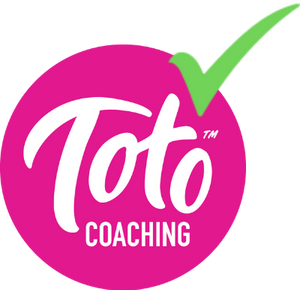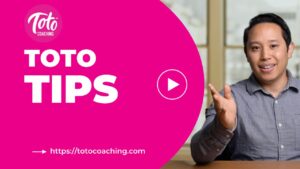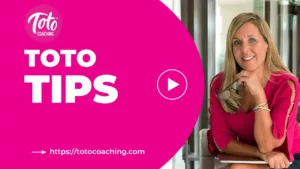Are you a web designer striving for the perfect footer layout that complements your website’s design?
In this article, we’ll explore common footer layouts, demystify their structures, and help you choose the one that suits your project.
Watch this video or read the article below
Transcript
Let’s explore some common footer layouts.
You can have a single column. This is a simple layout that features a single vertical column of content. It’s usually centered and it works well for minimalistic websites or those with less content. Horizontal footers are generally one column and look like this.
Multi-column footers. This layout divides the footer into multiple vertical columns, making it easier to organize and display different types of content. You can use two, three, or even four columns, depending on the amount of information you’d like to display.
You can have a full-width column. In this layout, the footer spans the entire width of the screen, often using a combination of columns and rows. And this layout is perfect for websites with lots of columns who are looking for, you know, a visually striking design in that area.
Let’s go over this a little more in detail
Footer Mastery 101
A footer is a little section at the bottom of a webpage that houses valuable details, links, and elements that contribute to how users navigate your site. It is advisable to include your business’s address, phone number, and email for easy reach in the footer section. Your footer is your digital business card, displaying your credibility and trustworthiness. That’s why you need to consider these elements in your footer section:
Navigation Links: These are the links that guide your visitor through your website. Think About, Services, and Blog pages.
Privacy Policy and Terms of Use: Including a “Privacy Policy and Terms of Use” statement in the footer section of a website is not just a legal requirement but also a way to build trust, enhance user awareness, and demonstrate a commitment to privacy and ethical business practices.
Social Media Icons: Placing social media icons in the footer section of a website makes it easy for your visitors to connect with you on different platforms. It is a strategic move to leverage the power of social media for brand promotion, user engagement, and building a digital community.
Copyright Notice and Logo: Including a “Copyright Notice and Logo” in the footer section of a website is a strategic move to assert ownership, protect intellectual property, enhance professionalism, and build a recognizable brand identity. It also serves as a legal and visual representation of the website’s unique presence on the internet.
As depicted in the illustration below, the footer is equipped with navigation links, Social Media Icons, and a distinctive Logo of the organization. This carefully curated footer enhances user experience, providing easy access to important information and fostering a seamless connection between our website and visitors.
Types of footer layouts
When it comes to footers, one size doesn’t fit all. There are various layouts to choose from, each serving a unique purpose;
Single-Column Footers
The single-column footer is the go-to choice for minimalistic websites or those with less content. It’s a clean, vertical stack of information, usually centered at the bottom of your webpage. This layout offers simplicity and is ideal for sites that want a neat and uncluttered look.
Horizontal Footers
If you prefer a straightforward design with a touch of elegance, the horizontal footer might be your best bet. Despite being a single column, it stretches across the width of the page, offering a streamlined appearance. Perfect for those who appreciate simplicity with a hint of sophistication.
Multi-Column Footers
Now, let’s step up the game with multi-column footers. This layout allows you to divide the footer into several vertical columns, creating a structured and organized display of content. Whether you opt for two, three, or four columns depends on the volume of information you want to present.
Two Columns: Balancing Act
Choosing a two-column footer strikes a balance between simplicity and organization. It’s perfect for websites that need a bit more structure without overwhelming the user. Consider this layout when you want to showcase varied content without sacrificing clarity.
Three Columns: The Power of Trio
The three-column layout is a sweet spot for those seeking a bit more complexity. It provides additional organization without overcrowding the footer. Web designers with diverse content types take note—this might be your ideal choice.
Four Columns: Maximum Information, Minimum Chaos
For websites with a plethora of content categories, the four-column footer is your solution. This layout enables you to neatly categorize and display various types of information without compromising on the overall design aesthetics.
Full-Width Column: Bold and Captivating
In this layout, the footer spans the entire width of the screen, often incorporating a combination of columns and rows. This bold design choice is perfect for websites that aim to make a visual impact, especially those with a considerable amount of varied content.
Choosing the Right Layout for Your Website: A Quick Guide
When deciding on a footer layout for your website, consider the following factors:
Content Volume: If your website has minimal content, a single column might be sufficient. For larger volumes, opt for multi-column layouts.
Visual Impact: Want to make a bold statement? Consider a full-width column for a visually striking design.
Organization Needs: Evaluate the types of content you have. Multi-column layouts excel in organizing diverse information.
User Experience: Always keep user experience in mind. Ensure that your chosen layout enhances, not hinders, navigation.
The footer might seem like a small detail, but its impact is significant. Your choice of layout influences not only the visual appeal of your website but also the user experience. Whether you opt for a single column for simplicity or a multi-column extravaganza for comprehensive organization, make sure it aligns with your website’s goals and content.
We offer hands-on classes to guide you through the best way of designing your footer. Enroll in our Full DIY Website Building Course or Fast Track Course today and take our Footer designing lesson.
Experiment, explore, and find the footer layout that speaks to your website’s personality.
This is the Toto way.
Read More Tips!
About the Author
Are You Searching the Internet for Help Building Your Website or Making it Better?
We are here to help you!!
Check out the entire DIY Website Building Course
where we walk you through building a website
from Start to Finish!
What are you waiting for? Let's get your website built!!
Not sure yet? But still wondering how to learn web design? Try a few lessons for free!
Sign up for a no-commitment free trial. You will be given access to two of our actual website building class lessons. One lesson is a shorter and more simple lesson, and the other is a longer, more involved lesson so that you can see the types of lessons we offer and you can get a feel for our coaches and what you will learn.
What are you waiting for? Let's get your website built!!









